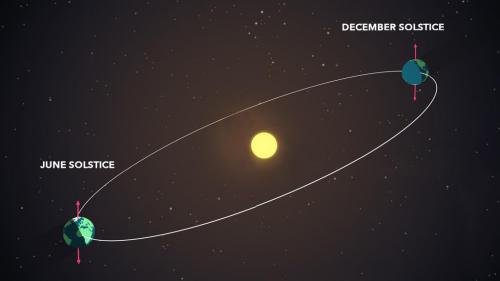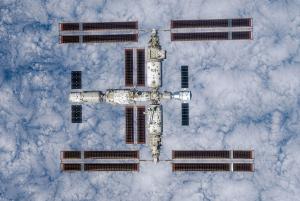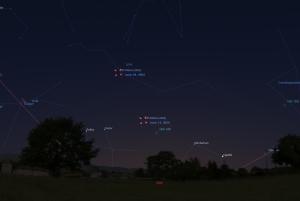Celebration of Space - June 14, 2024
This coming Thursday, June 20, 2024 at 4:51 pm ET, the height of late sunsets and summertime bliss will occur when Earth arrives at the point in its orbit where the Northern Hemisphere is at maximum tilt, 23.4°, towards the Sun. This is the Summer Solstice, but most people know it as the first day of summer in the Northern Hemisphere. On Thursday, the Sun will pass directly overhead at noon along the Tropic of Cancer, and will bring the shortest nighttime period of the year in the north. The Arctic Circle will see the Midnight Sun, and the Antarctic Circle will see Polar Night. This may be an awesome time for sipping lemonade around the BBQ, but the super short nights make it a tough time for astronomy. Allowing for only 4.5 hours of dark sky conditions outside of twilight. Regardless, beach days, summer break, BBQ, mosquitoes, wildfire smoke, awesome sunsets, picnics, and sunburn are here for the next few months. Whether you hate it or love it, step outside on Thursday and feel the heat of the Summer Solstice and welcome summer. Have a happy Summer Solstice from all the astro-geeks at Frosty Drew Observatory and Science Center!
Over the past week we have had so many fantastic passes of China’s Tiangong space station over our region. Even though passes continue into this weekend, they will be wrapping up on Tuesday, June 18th. Even though the best passes have already happened, there are still a couple of views left to be had. Here are the notable passes of Tiangong over the next couple of days:
Fri, Jun 14 at 9:46 pm, starting in the W, rising to 34°, heading towards the SSE, and into orbital sunset
Sun, Jun 16 at 9:23 pm, starting in the W, rising to 22°, heading towards the SSE, and into orbital sunset
Tue, Jun 18 at 8:59 pm, starting in the WSW, rising to 14°, heading towards the S
Tiangong passes will resume on July 9th, but they will be morning, predawn passes. Tiangong will not return to the evening with visible passes until July 25th. So step outside this weekend and catch the last passes of Tiangong for spring 2024. As for the International Space Station (ISS), evening passes will kick back in on July 7th. Check in regularly on the Frosty Drew websitefor daily pass times of the stations and other bright satellites.
Over the past several months a comet known as 13P/Olbers has been making its way into the vicinity of the Sun. A periodic comet, Olbers completes one full orbit around the Sun every 67.88 years, making this the first return of the comet since 1956, and the last visit until 2094. The comet will reach its closest point to the Sun, called Perihelion, on June 29, 2024, at a distance of 109.69 million miles from the Sun. Over the past week, the comet has brightened to visible magnitude 6.3, which is brighter than anticipated for this orbital cycle. As perihelion approaches, the comet will continue to brighten. Comet 13P is currently in the constellation Auriga and should be visible in binoculars after 9:30 pm ET about 15° above the NW horizon. As perihelion approaches and passes, the comet will become easier to observe over the evening horizon as it rises higher. Here is a finder chart, set to 9:30 pm ET, to help with locating 13P/Olbers in the night sky. We’ll keep you posted over the next couple of weeks on the progress of Comet 13P/Olbers, especially if there are any notable viewing opportunities.
- Author:
- Scott MacNeill
- Entry Date:
- Jun 14, 2024
- Published Under:
- Scott MacNeill's Columns




